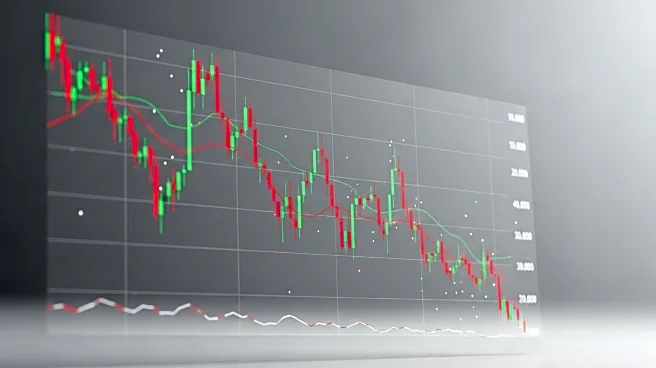What is the story about?
What's Happening?
The Dow Jones Industrial Average rose by 236 points following the release of August's personal consumption expenditures price index, which is the Federal Reserve's preferred measure of inflation. The index showed core inflation at a 2.9% seasonally adjusted annual rate, aligning with economists' expectations. The all-items index also matched expectations with an annual rate of 2.7% and a monthly gain of 0.3%. Despite solid jobs data and a strong upward revision in second-quarter GDP to 3.8%, investors are concerned that fewer jobless claims might indicate a robust economy, potentially reducing the Federal Reserve's incentive to cut interest rates further. Markets are currently pricing in two quarter-point rate cuts at the Fed's upcoming meetings, as projected by the central bank.
Why It's Important?
The Federal Reserve's inflation report is crucial as it influences market expectations regarding future interest rate cuts. A stable inflation rate suggests that the economy is not overheating, which could support the Fed's decision to implement gradual rate cuts. This is significant for investors who prefer rate cuts in a strong economy rather than a weak one. The report also impacts consumer sentiment, which remained steady in September, particularly among those with larger stock holdings. The market's reaction to the inflation data reflects broader economic conditions, including employment and GDP growth, which are key indicators for the Fed's monetary policy decisions.
What's Next?
The Federal Reserve's upcoming meetings will be closely watched as markets anticipate potential rate cuts. Investors will continue to monitor economic indicators such as jobless claims and GDP growth to gauge the Fed's likely actions. The outcome of these meetings could significantly influence market sentiment and investment strategies. Additionally, the performance of major tech companies, including Oracle, which has seen losses amid questions over the strength of the AI trade, will be a focal point for investors assessing market trends.
Beyond the Headlines
The Federal Reserve's cautious approach to interest rate cuts highlights the delicate balance between fostering economic growth and maintaining price stability. The decision-making process involves assessing various economic indicators, including inflation, employment, and GDP growth. The broader implications of these decisions extend to consumer confidence and investment strategies, as stakeholders navigate the complexities of monetary policy and its impact on the economy.
AI Generated Content
Do you find this article useful?













